Must-Visit Destinations in South Africa: Constitution Hill Museum, Umhlanga Rocks, and the Voortrekker Monument
Constitution Hill is a real-life museum that chronicles South Africa’s democratic transition. The location, which was formerly a prison and a military fort and now houses the country’s Constitutional Court, which upholds the rights of all residents, is a monument to South Africa’s stormy past. Four different places on Constitution Hill host equally compelling and inspirational displays. Make a reservation at one of our Johannesburg lodging options so that you may stay a few extra days to explore Jozi. The Constitution hil of Johannesburg is an impressive historical attraction we can find in the whole of South Africa.
Constitution Hill is a historic site in Johannesburg, South Africa, with cultural, historical, and architectural significance. Here are key details about Constitution Hill:
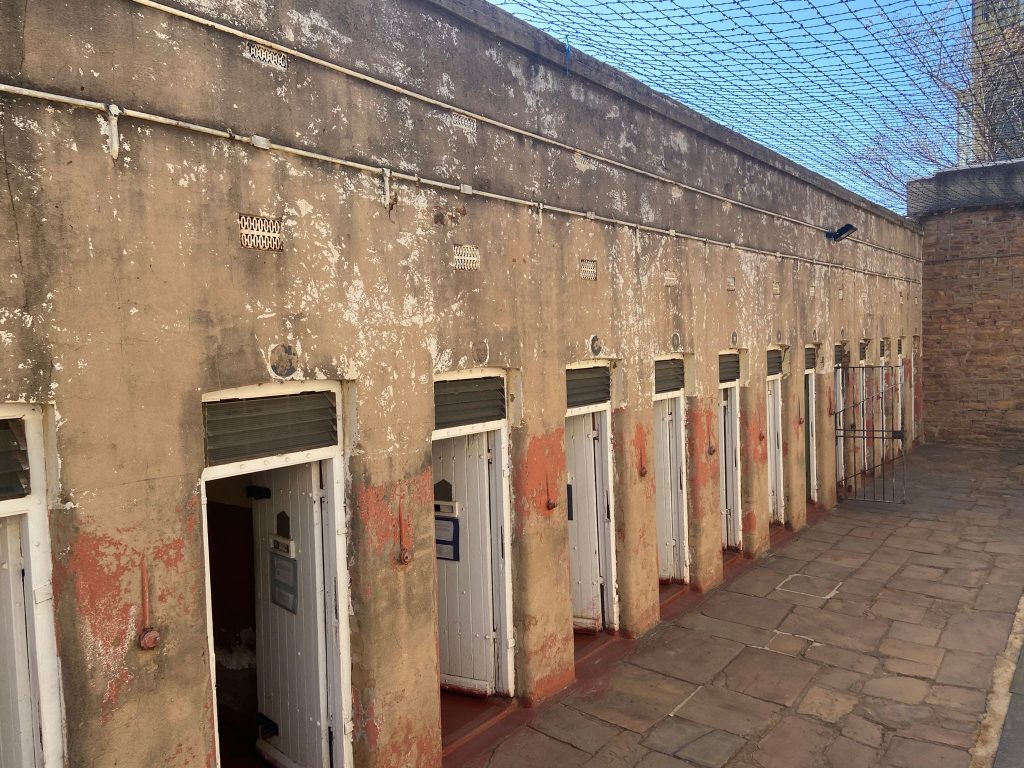
- Location:
- Constitution Hill is located in the Braamfontein suburb of Johannesburg, Gauteng, South Africa.
- Historical Significance:
- The site has played a crucial role in South Africa’s history. Initially, it was a fort built by Paul Kruger, the President of the South African Republic, to defend the city against the British during the Anglo-Boer War (1899-1902).

- Apartheid Era:
- During the 20th century, the fort was repurposed as a prison. Notably, Constitution Hill housed political prisoners during the apartheid era. Many anti-apartheid activists, including Nelson Mandela, were held here.
- Architectural Features:
- The complex includes Old Fort, the Women’s Jail, and Number Four. The architecture reflects the various stages of its history. The Old Fort, with its distinctive turrets, represents the colonial era, while the prison buildings symbolize the injustice of apartheid.
- Transformation:
- Constitution Hill underwent a transformation after the end of apartheid. It was chosen as the site for the new Constitutional Court, the highest court in South Africa dealing with constitutional matters.

- Constitutional Court:
- The Constitutional Court building, designed by South African architects, stands as a symbol of justice, democracy, and human rights. It incorporates elements from the old prison buildings, signifying the country’s commitment to justice and reconciliation.
- Museum and Tours:
- Constitution Hill operates as a living museum and heritage site. Visitors can explore the Old Fort, Women’s Jail, and Number Four. Guided tours provide insights into the site’s history, the struggle against apartheid, and the constitutional development of post-apartheid South Africa.
- The Mandela Exhibition:
- The site features The Mandela Exhibition, showcasing Nelson Mandela’s life and legacy. It includes a replica of Mandela’s prison cell.
- Human Rights Precinct:
- Constitution Hill, with its Constitutional Court, is part of the broader Human Rights Precinct in Johannesburg. The precinct reflects South Africa’s commitment to human rights and constitutionalism.
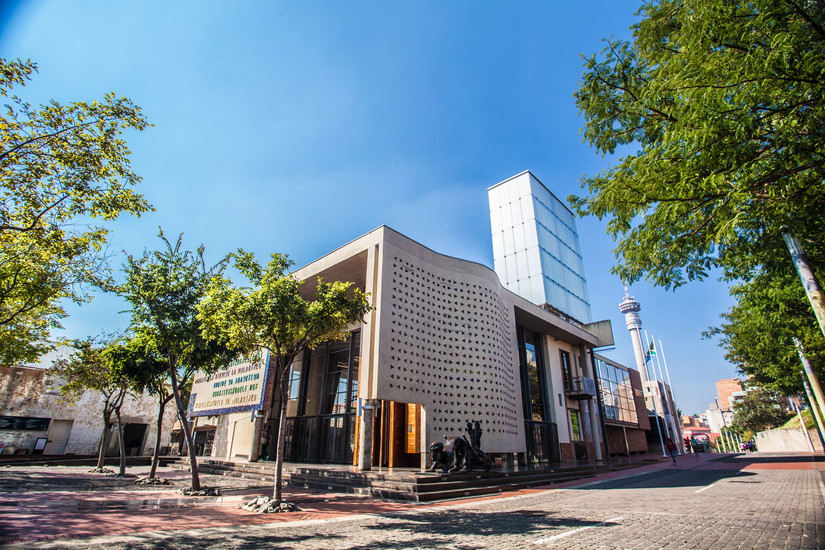
- Symbol of Reconciliation:
- Constitution Hill serves as a symbol of South Africa’s journey from colonialism and apartheid to democracy and reconciliation. It stands as a testament to the nation’s commitment to justice, human rights, and the rule of law.
Visiting Constitution Hill provides a profound understanding of South Africa’s complex history and its ongoing pursuit of justice and equality. The site’s transformation from a symbol of oppression to a beacon of justice reflects the country’s resilience and commitment to a democratic future.
Umhlanga Rocks – A Coastal Resort Town in South Africa
Umhlanga Rocks is a coastal resort town located on the east coast of South Africa, just north of Durban. Here are some key points about Umhlanga Rocks:
- Location:
- Umhlanga Rocks is situated approximately 16 kilometers north of the city center of Durban in the KwaZulu-Natal province.
- Beaches:
- The town is renowned for its beautiful beaches, including the Umhlanga Main Beach. The beaches are known for their golden sands, warm Indian Ocean waters, and the iconic Umhlanga Pier.
- Umhlanga Pier:
- The Umhlanga Pier is a popular landmark and a great spot for leisurely walks, fishing, and enjoying panoramic views of the coastline.
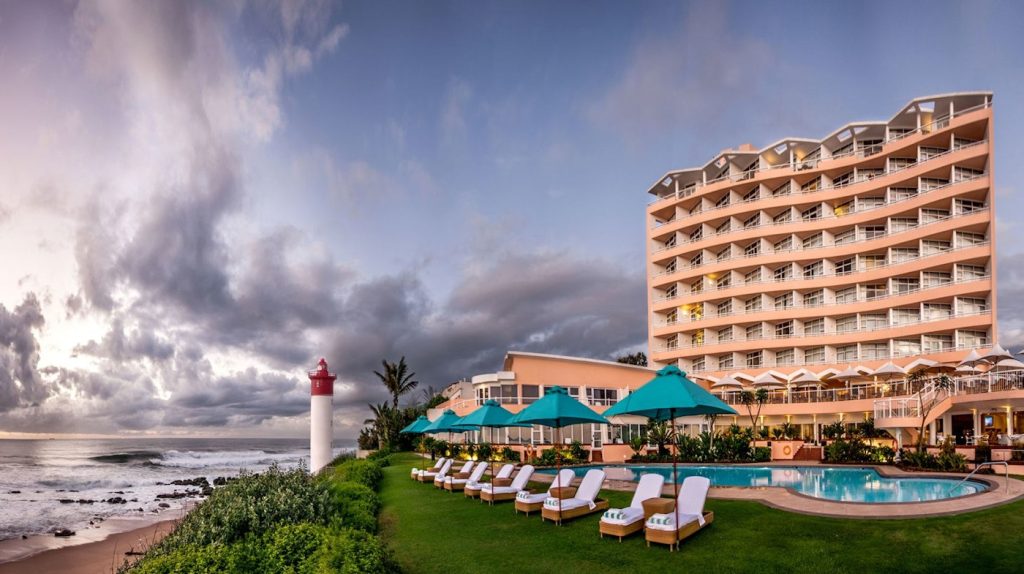
- Umhlanga Lighthouse:
- The Umhlanga Lighthouse is another iconic feature, providing a picturesque backdrop to the beaches. It has become a symbol of Umhlanga Rocks.
- Gateway Theatre of Shopping:
- The Gateway Theatre of Shopping, one of the largest shopping malls in the southern hemisphere, is located in Umhlanga. It offers a wide range of retail, dining, and entertainment options.

- Accommodation:
- Umhlanga Rocks offers a variety of accommodation options, including luxury hotels, resorts, and guesthouses. Many of these establishments provide stunning ocean views.
- Attractions:
- Apart from the beaches and shopping, Umhlanga Rocks offers various attractions and activities. These include watersports, golf courses, and nature reserves.
- Nature Reserves:
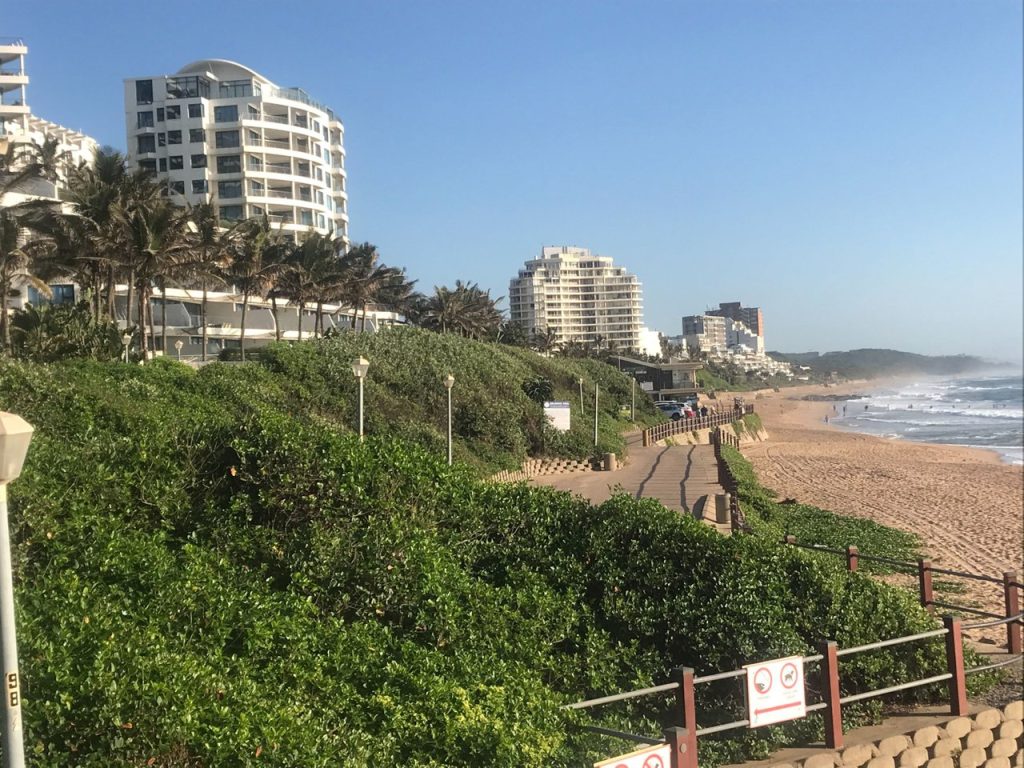
- Nearby nature reserves, such as the Hawaan Forest and Umhlanga Lagoon Nature Reserve, provide opportunities for outdoor activities and birdwatching.
- Cuisine:
- The town boasts a vibrant culinary scene with numerous restaurants and cafes offering diverse cuisine, from seafood to international flavors.
- Events and Festivals:
- Umhlanga Rocks hosts various events and festivals throughout the year, attracting both locals and tourists. These may include music festivals, food events, and cultural celebrations.
- Accessibility:
- Umhlanga Rocks is easily accessible, with King Shaka International Airport located nearby, providing domestic and international flights.
- Residential Area:
- In addition to being a popular tourist destination, Umhlanga Rocks is a sought-after residential area known for its upscale properties and scenic surroundings.

Whether visitors are looking for a relaxing beach vacation, indulging in shopping and entertainment, or exploring natural attractions, Umhlanga Rocks offers a diverse range of experiences along the South African coast.
The Voortrekker Monument – A Historical Landmark in South Africa
The Voortrekker Monument is a significant historical and cultural landmark in South Africa, commemorating the Boers’ (Afrikaner pioneers) journey, known as the Great Trek, during the 19th century. Here are key details about the Voortrekker Monument:
- Location:
- The Voortrekker Monument is situated on Monument Hill, south of Pretoria, the administrative capital of South Africa. It stands prominently on a hill overlooking the city.
- Construction:
- The monument was constructed between 1937 and 1949 and officially opened on December 16, 1949. The date holds historical importance as it marks the Day of the Covenant, an event celebrated by Afrikaners.

- Architectural Design:
- The monument was designed by the architect Gerard Moerdijk. It has a distinct architectural style, combining elements of Art Deco and neoclassical design. The massive granite structure is characterized by its central dome and carved friezes.
- Purpose and Symbolism:
- The Voortrekker Monument was erected to honor and memorialize the Boers who participated in the Great Trek, a historical migration in the 1830s and 1840s. The monument symbolizes the Afrikaners’ struggle for freedom and independence.
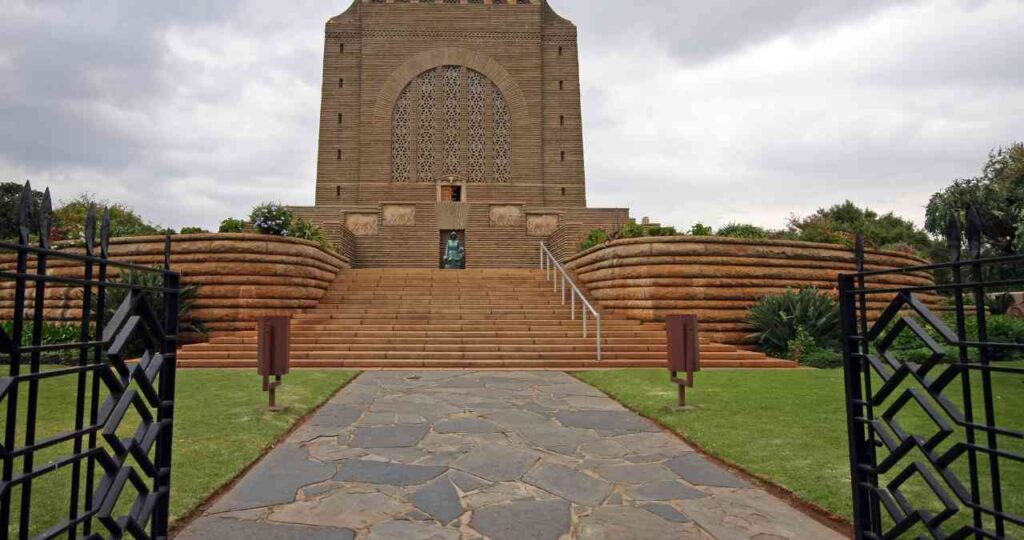
- The Great Trek:
- The Great Trek was a mass migration of Boer settlers who, dissatisfied with British colonial rule, embarked on a journey into the interior of Southern Africa to establish their independent republics.
- Friezes and Bas-Reliefs:
- The monument features a series of impressive bas-reliefs and friezes depicting scenes from the Great Trek. These intricate carvings narrate the challenges, victories, and hardships faced by the Voortrekkers during their journey.
- Cenotaph:

- The Cenotaph, a central feature within the monument, symbolizes the sacrifices made by the Voortrekkers. Inscriptions on the Cenotaph honor those who lost their lives during the Great Trek.
- Museum and Heritage Center:
- The Voortrekker Monument includes a museum and heritage center that provides further insights into the history of the Great Trek and the cultural heritage of the Afrikaner community.
- Garden of Remembrance:
- Surrounding the monument is the Garden of Remembrance, where visitors can find the Wall of Remembrance commemorating those who fought in various conflicts.
- Day of the Vow:
- The Day of the Covenant (now known as the Day of Reconciliation) is traditionally celebrated at the Voortrekker Monument on December 16th, recalling the Battle of Blood River in 1838, a significant event during the Great Trek.
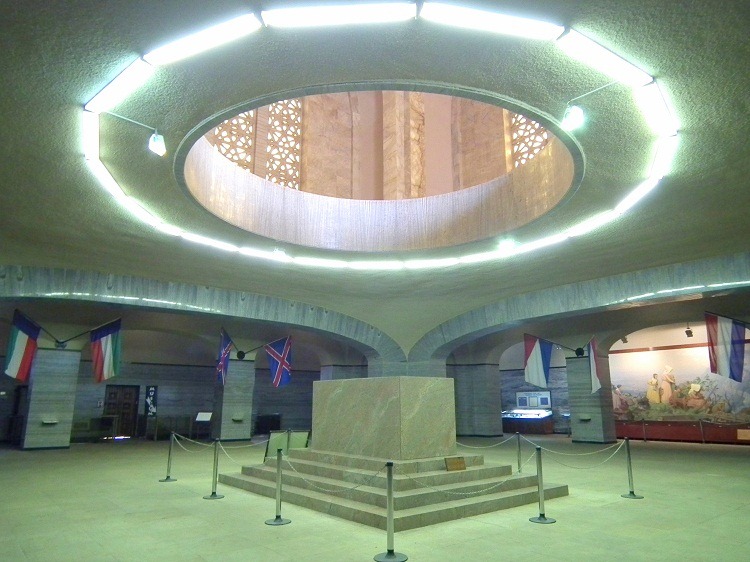
The Voortrekker Monument stands as a symbol of Afrikaner heritage and identity, reflecting the historical events that shaped South Africa. It is open to the public, welcoming visitors to explore its architecture, exhibits, and surrounding grounds, offering a deeper understanding of the country’s complex history.
Add a Comment
You must be logged in to post a comment.
